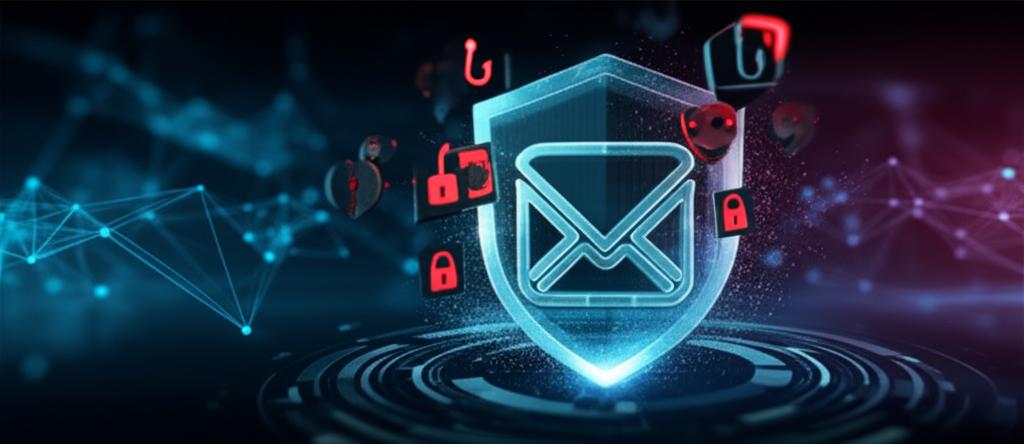Fortify Your Inbox: The Essential Email Security Features You Can’t Ignore
In today’s digital landscape, email remains the primary communication channel for businesses and individuals alike. However, this ubiquity also makes it a prime target for cybercriminals. Protecting your inbox isn’t just about avoiding spam; it’s about safeguarding sensitive data, preventing financial loss, and maintaining trust. Understanding the core email security features available is paramount to building a robust defense.
Why Email Security is Non-Negotiable
Email-borne threats are constantly evolving, from sophisticated phishing attacks and ransomware to business email compromise (BEC) schemes. A single successful attack can lead to:
- Data breaches and regulatory fines
- Financial losses from fraud or ransomware
- Reputational damage and loss of customer trust
- Disruption of business operations
Fortunately, a suite of powerful email security features can significantly reduce these risks.
Key Email Security Features to Protect Your Communications
Here’s a breakdown of the critical features that form the backbone of a secure email system:
1. Advanced Spam and Anti-Malware Filters
More than just blocking junk mail, modern spam filters use AI and machine learning to detect and quarantine malicious emails, including those carrying viruses, worms, and other malware, before they reach your inbox.
- Spam Filtering: Identifies and blocks unsolicited bulk email.
- Anti-Malware/Anti-Virus: Scans attachments and links for known and emerging threats.
2. Phishing and Spoofing Protection
Phishing attacks are designed to trick recipients into revealing sensitive information. Effective security solutions employ sophisticated techniques to detect and block these malicious emails, including:
- URL Rewriting/Scanning: Inspects links for malicious redirects.
- Attachment Sandboxing: Detonates suspicious attachments in a safe, isolated environment.
- Impersonation Detection: Flags emails that attempt to mimic trusted senders (e.g., CEO fraud).
3. Email Encryption
Encryption ensures that the content of your emails remains confidential as it travels across the internet. It scrambles the message, making it unreadable to anyone without the correct decryption key.
- Transport Layer Security (TLS): Encrypts the communication channel between mail servers.
- End-to-End Encryption (S/MIME, PGP): Encrypts the message itself, from sender to recipient.
4. Email Authentication Protocols (SPF, DKIM, DMARC)
These protocols verify the legitimacy of incoming emails, helping to prevent spoofing and phishing by ensuring that an email truly originates from the domain it claims to be from.
- SPF (Sender Policy Framework): Specifies which mail servers are authorized to send email on behalf of a domain.
- DKIM (DomainKeys Identified Mail): Adds a digital signature to emails, verifying the sender and ensuring the message hasn’t been tampered with.
- DMARC (Domain-based Message Authentication, Reporting & Conformance): Builds upon SPF and DKIM, telling receiving servers what to do with emails that fail authentication (e.g., quarantine, reject).
5. Data Loss Prevention (DLP)
DLP solutions monitor outgoing emails to prevent sensitive information (e.g., credit card numbers, personal data, intellectual property) from leaving the organization’s control, either accidentally or maliciously.
6. Multi-Factor Authentication (MFA)
While not strictly an “email feature,” MFA is crucial for securing access to email accounts. It requires users to provide two or more verification factors (e.g., password + a code from a phone) before granting access, significantly reducing the risk of unauthorized access even if a password is stolen.
7. Email Archiving and Backup
For compliance, legal discovery, and disaster recovery, robust email archiving solutions store copies of all emails securely. This ensures that valuable communications are preserved and accessible, even if emails are accidentally deleted or systems fail.
Choosing the Right Email Security Solution
When evaluating email security providers, consider:
- Layered Protection: Does it offer a comprehensive suite of features?
- Ease of Management: Is it easy to deploy, configure, and monitor?
- Scalability: Can it grow with your organization’s needs?
- Threat Intelligence: Does it leverage real-time threat data?
- Compliance: Does it help meet regulatory requirements (e.g., GDPR, HIPAA)?
“In the digital age, proactive email security is not an option; it’s a fundamental requirement for business continuity and trust.”
— Cybersecurity Expert
Conclusion: Secure Your Digital Gateway
Email security is a continuous battle against evolving threats. By implementing a layered approach that incorporates these essential email security features, organizations and individuals can significantly strengthen their defenses, protect their data, and ensure the integrity of their most vital communication channel. Don’t wait for a breach; fortify your inbox today.







